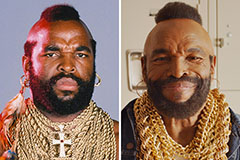In today's fast-paced digital landscape, users demand smooth and intuitive mobile experiences. To achieve this goal, developers must prioritize a user-centered design approach that considers all aspect of the mobile experience. From intuitive navigation to quick loading times, every element should play a role to the overall usability. Additionally, developers need to fine-tune apps for different screen sizes and devices to ensure a consistent experience across all mobile devices.
By incorporating best practices in mobile development, developers can design apps that are not only effective but also pleasurable to use.
Crafting Your Mobile App: From Idea to Launch
Bringing check here a mobile app idea to life is an exciting journey comprising several stages. The process begins with conceptualizing the app's core purpose. This involves identifying the target audience, their needs, and how your app can address them.
Once the concept is refined, you move into the design phase. UI/UX designers craft a user-friendly interface that is both visually appealing and intuitive to navigate. This stage often entails wireframing, prototyping, and testing to ensure a seamless user experience.
After the design is finalized, developers start coding the app using appropriate programming languages and frameworks. They build the designed features, linking APIs and third-party tools as needed. Thorough testing is carried out throughout this phase to identify and correct any bugs or issues.
Finally the app is prepared for the desired app store(s). This includes creating compelling marketing materials, optimizing app listings for searchability, and releasing the app to the public. Post-launch, ongoing support, maintenance, and updates are vital to ensure user satisfaction and improve the app's performance over time.
The Future of Mobile Apps: Trends and Technologies
The mobile app landscape is dynamically shifting at a breakneck pace. Programmers are pushing the boundaries of innovation, leveraging cutting-edge technologies to create immersive and user-friendly experiences. The future of mobile apps is set to be influenced by a confluence of trends.
- Artificial intelligence (AI) will play an increasing role in personalizing app experiences, providing adaptive recommendations and streamlining tasks.
- Augmented reality applications are poised to transform industries, from education to travel.
- Blockchain technology will enhance app data and transactions, encouraging trust and transparency.
- Edge computing will enable apps to be more scalable.
As these technologies evolve, we can expect to a future where mobile apps are not just tools, but integral components of our daily lives.
Unveiling the Mobile App Development Process
Building a mobile app can seem like a daunting task, filled with complex technologies. However, by breaking down the process into manageable stages, we can convert this perceived complexity into a clear and manageable roadmap.
Firstly, identifying your app's core function is crucial. What problem will your app tackle? Who is your target demographic? These questions will shape the entire development process.
Next, consider the environment you'll be building on - iOS, Android, or both? Each platform has its own strengths, and your choice will determine the technologies and tools you'll need.
Ultimately, the development process involves creating the app's user interface, coding the backend functionality, and rigorously verifying each stage to ensure a flawless user experience.
Crafting the Art of Mobile UI/UX Design
In today's dynamic digital landscape, mobile applications have become crucial to both individuals and businesses. As such, the demand for skilled mobile UI/UX designers has surged. These designers play a pivotal role in creating user-friendly and appealing mobile experiences that delight users.
To truly flourish in this field, aspiring mobile UI/UX designers must embrace a deep understanding of both the technical and creative aspects of design.
This involves:
* Proficiently mastering industry-standard design tools and software.
* Conducting thorough user research to uncover user needs and pain points.
* Creating wireframes, prototypes, and high-fidelity mockups that effectively communicate the design vision.
* Continuously iterating and refining designs based on user feedback and testing.
By adhering these principles, mobile UI/UX designers can create impressive applications that resonate with users on a deep level.
Launching a Successful Mobile App Business
Launching a successful mobile app business requires a mixture of creativity, strategy, and implementation. First, you need to pinpoint a problem in the market that your app can address. Once you have a compelling concept, it's time to create an app that is both user-friendly and appealing to users. A well-executed marketing plan is crucial for reaching your audience and increasing downloads. Finally, remember that building a successful app business is an persistent journey that requires evolution and a commitment to success.
- Research your target market thoroughly.
- Design a high-quality app that meets user needs.
- Market your app effectively across multiple channels.
- Track your app's performance and introduce necessary adjustments.
 Mr. T Then & Now!
Mr. T Then & Now! Judge Reinhold Then & Now!
Judge Reinhold Then & Now! Seth Green Then & Now!
Seth Green Then & Now! Bo Derek Then & Now!
Bo Derek Then & Now! Terry Farrell Then & Now!
Terry Farrell Then & Now!